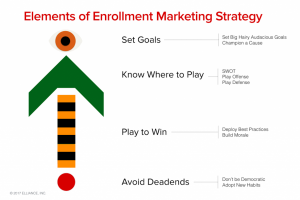
Former Indiana University basketball coach Bobby Knight famously said to an audience of newspaper reporters, “All of us learn to write in the second grade. Most of us go on to greater things.” Part joke, part poisoned-tipped joust, the heralded Knight voiced an ambivalence about writing and writers that lingers within many college marketing departments […]





